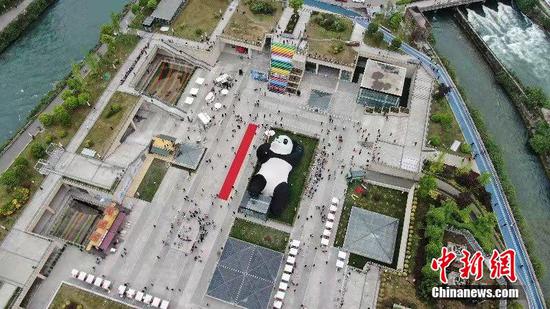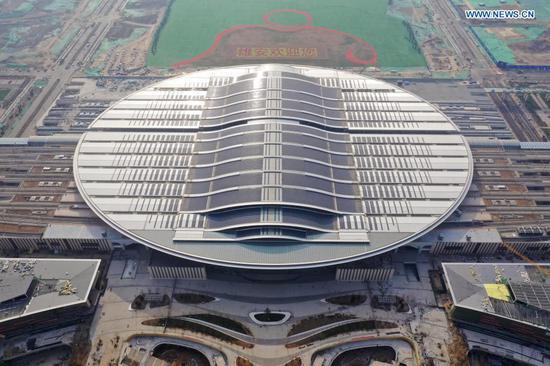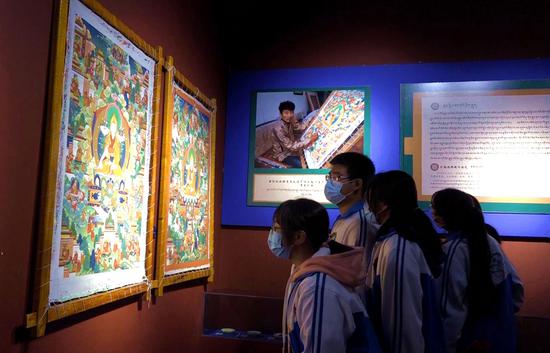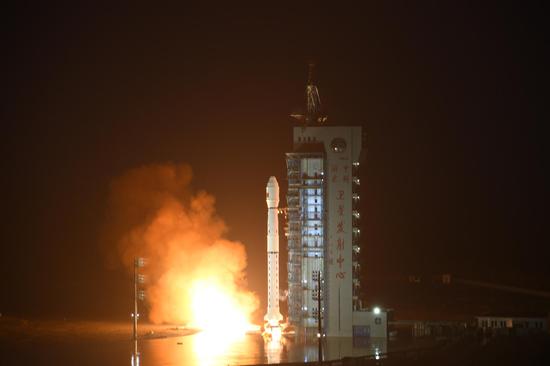
China COSCO Shipping's Zhongyuantaicang container ship, with a tonnage exceeding 10,000 tons, docks at the Beibu Gulf Port in Qinzhou, Guangxi Zhuang autonomous region. (Photo provided to China Daily)
Plan combines weighty role of domestic consumers with continual opening-up
China's new "dual-circulation" development model will provide the engine for the country's future economic success and could herald a new era of globalization, according to experts.
The model, which combines the forces of China's domestic economy and international economic engagement, is set to be central to China's 14th Five-Year Plan (2021-25).
It was first raised by Xi Jinping, general secretary of the Communist Party of China Central Committee, at a high-level CPC meeting in May.
Stephen Roach, a leading US economist and senior fellow at Yale University's Jackson Institute for Global Affairs, called it a "very important strategic concept".
"It underscores China's focus on both the internal and external elements of its growth strategy," he said. "Success will be measured on how well these two sources of support work together rather than in isolation from one another."
Edward Tse, CEO and founder of Gao Feng Advisory, a management consultancy, believes that dual circulation is a concept that fully embraces the emergence of "globalization 2.0".
He said globalization 1.0 was the Made in China era of China being the center of supply, while now, with a huge new middle-income group, the nation is a center of demand as well as supply.
"This is the new pattern of dual cycles of global supply and demand which epitomizes a new era of globalization," he said.
China's dual circulation strategy, in which the domestic economy is the mainstay and the domestic and international economies complement each other, has already attracted much international interest and comment.
At its heart, it acknowledges the importance of domestic consumption in the next phase of the country's economic development. China is set to have 600 million middle-income consumers by the middle of this decade, according to management consultants McKinsey &Co. The new development paradigm also emphasizes the need for greater indigenous technological innovation and the strengthening of domestic supply chains.
At the same time, the model recognizes the importance of the international economy in China's development, including further opening-up of the economy to foreign companies.
Xi has said the aim is to "fully bring out the advantage of its (China's) super-large market scale and the potential of domestic demand to establish a new development pattern featuring domestic and international circulations that complement each other."
Zhu Ning, a professor of finance and also deputy dean at the Shanghai Advanced Institute of Finance, believes the new model is right to recognize the role of domestic consumption in China's future development.
"Consumption now contributes more than half of China's economic growth, and the domestic market is growing faster than that of many developed economies," he said.
However, he added, "The dual circulation aspect of this has to be borne in mind at all times. It would be counterproductive if China gave up on opening-up and solely focused instead on its domestic economy."
Hao Hong, managing director and head of research at BOCOM International Securities, based in Hong Kong, said the strategy recognizes a major shift taking place in China's economy.
"It is about the changing role of China's production capacity and the need to move it to satisfy the new domestic demand and not just that from abroad. You can see this already with car production and the manufacture of iPhones. Increasingly they are being made in China to meet domestic demand," he said.


















































